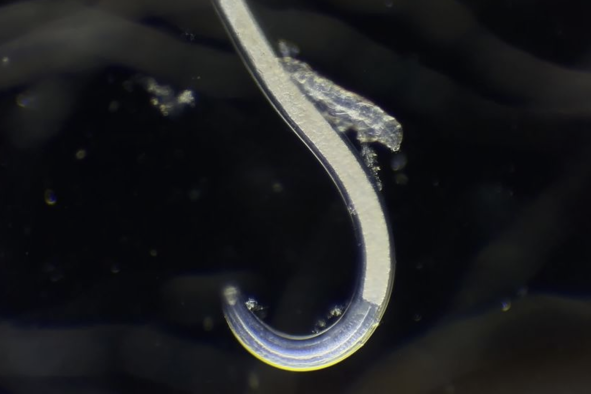A tiny black hole may pass through our solar system once every ten or so years, researchers have suggested, and this could be detected by watching Mars wobble.
This estimate is based on an idea proposed in the 1970s that the majority of dark matter in the universe is comprised of minuscule black holes.
To determine if this theory is true, researchers are closely watching the orbit of Mars. This is because, according to a new paper due to be published in the journal Physical Review D, one of these tiny black holes traveling past could cause the red planet to wobble enough that we could spot it from Earth.
"Given decades of precision telemetry, scientists know the distance between Earth and Mars to an accuracy of about 10 centimeters [4 inches]," study co-author David Kaiser, professor of physics at MIT, said in a statement. "We're taking advantage of this highly instrumented region of space to try and look for a small effect. If we see it, that would count as a real reason to keep pursuing this delightful idea that all of dark matter consists of black holes that were spawned in less than a second after the Big Bang and have been streaming around the universe for 14 billion years."
Dark matter is a form of matter that does not emit, absorb, or reflect light, making it invisible to telescopes and all other current electromagnetic detection methods. Despite being undetectable by traditional means, dark matter is inferred to exist because of its gravitational effects on visible matter, such as stars and galaxies. Scientists estimate that dark matter makes up about 27 percent of the universe's mass-energy content. This is vastly more than the approximately 5 percent of the universe made up of normal matter, like stars, planets, and all life on Earth.
One way that we know dark matter exists is from the way galaxies rotate: Observations show that galaxies are spinning much faster than can be explained by the mass of visible matter alone, meaning that there must be unseen mass—presumed to be dark matter—present to provide the additional gravitational pull to account for this.
Scientists have been trying for decades to measure the properties of dark matter. In the 1970s, it was suggested that this dark matter could be tied up in teeny primordial black holes that formed during the Big Bang. These black holes could be as wide as a single atom, but weigh as much as a huge asteroid.
In the paper, the researchers estimated that based on the level of dark matter in a given area of space, one of these tiny black holes should zip through our solar system once every decade.
"Primordial black holes do not live in the solar system. Rather, they're streaming through the universe, doing their own thing," paper co-author Sarah Geller, now a postdoc at the University of California at Santa Cruz, said in the statement. "And the probability is, they're going through the inner solar system at some angle once every 10 years or so."
To detect these black holes and prove this theory right, the researchers modeled the orbits of every large body in the solar system, and found that tiny wobbles in the orbit of Mars could indicate one of the asteroid-mass black holes passing through.
"State-of-the-art simulations of the solar system include more than a million objects, each of which has a tiny residual effect," study co-author, Benjamin Lehmann, a researcher at MIT, said in the statement. "But even modeling two dozen objects in a careful simulation, we could see there was a real effect that we could dig into."
These wobbles would only be by around a meter, but this could be detected by equipment here on Earth.
Even if researchers did detect one of these wobbles, much more work would be needed to confirm that it wasn't just caused by an asteroid.
"We need as much clarity as we can of the expected backgrounds, such as the typical speeds and distributions of boring space rocks, versus these primordial black holes," Kaiser said. "Luckily for us, astronomers have been tracking ordinary space rocks for decades as they have flown through our solar system, so we could calculate typical properties of their trajectories and begin to compare them with the very different types of paths and speeds that primordial black holes should follow."
If these tiny black holes are indeed real, if one did approach within 3 feet meter of a person, it would push them away by about 20 feet in a single second. Luckily for us, they are incredibly unlikely to come close to a person, according to study lead author and MIT researcher Tung Tran.
Do you have a tip on a science story that Newsweek should be covering? Do you have a question about black holes? Let us know via science@newsweek.com.
References
Tran, T. X., Geller, S. R., Lehmann, B. V., & Kaiser, D. I. (2024) Close encounters of the primordial kind: a new observable for primordial black holes as dark matter.
Physical Review D.
Disclaimer: The copyright of this article belongs to the original author. Reposting this article is solely for the purpose of information dissemination and does not constitute any investment advice. If there is any infringement, please contact us immediately. We will make corrections or deletions as necessary. Thank you.



